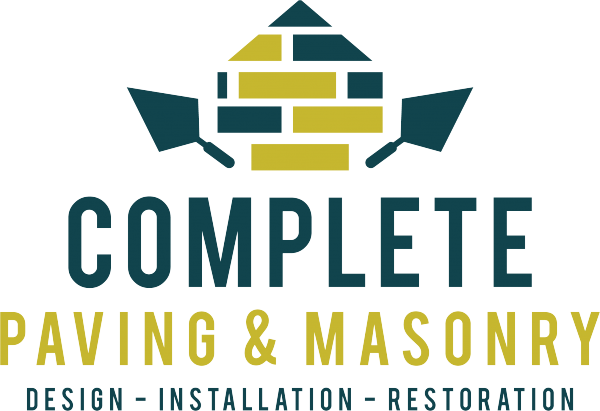Masonry Construction Techniques
Masonry construction techniques vary depending on the type of material used and the desired outcome. When constructing buildings or structures using materials like brick, stone, or concrete blocks, it is crucial to employ proven methods to ensure durability and stability. In locations like Masonry Westwood, traditional techniques such as mortaring the joints and using proper reinforcement are commonly seen in the construction process.
Modern masonry construction techniques have evolved to incorporate advanced equipment and tools for more efficient and precise results. From utilizing specialized mortar mixtures to employing cutting-edge machinery for cutting and shaping materials, these methods have revolutionized the construction industry. In Masonry Westwood and beyond, a blend of traditional craftsmanship and innovative practices is essential for achieving sturdy and visually appealing masonry structures.
Traditional vs Modern Methods
Traditional masonry construction methods have been employed for centuries, focusing on handcrafted techniques using materials such as bricks, stones, and mortar. This approach, often referred to as “brick and mortar” construction, can be found in historical buildings and landmarks around the world, showcasing intricate designs and sturdy structures that have withstood the test of time. In contrast, modern masonry construction methods incorporate advanced technology and tools to enhance efficiency and precision. Masonry Westwood exemplifies this shift towards innovative practices, utilizing cutting-edge equipment and techniques to streamline construction processes and improve overall quality.
Importance of Proper Maintenance
Proper maintenance is vital for the longevity and durability of masonry structures. Neglecting maintenance can lead to deterioration over time, compromising the integrity of the construction. For residents of Masonry Westwood, regular upkeep is key to ensuring that their masonry buildings remain in optimal condition for years to come. Inspecting for cracks, leaks, efflorescence, or any signs of damage can help catch potential issues early on, preventing costly repairs down the line. Regular cleaning and sealing of masonry surfaces can also protect against moisture penetration and environmental wear, preserving the aesthetic appeal and structural soundness of the buildings in Masonry Westwood.
Preventing Deterioration and Damage
Masonry construction is a durable and strong building technique; however, it is not immune to deterioration and damage over time. To prevent these issues, regular maintenance and inspections are crucial for the longevity of structures. By addressing small cracks or signs of wear early on, significant damage can be avoided. Masonry Westwood recommends conducting inspections at least once a year to identify any potential issues and address them promptly to prevent further deterioration.
In addition to routine inspections, protecting masonry structures from water infiltration is essential for preventing damage. Water can penetrate through cracks and porous materials, leading to erosion and weakening of the structure over time. Applying waterproof sealants and ensuring proper drainage can help mitigate the risk of water damage. By taking proactive measures to prevent deterioration and damage, masonry structures can remain sturdy and resilient for years to come.
Sustainable Practices in Masonry Construction
Sustainable practices in Masonry Westwood construction play a vital role in reducing environmental impact. Utilizing locally sourced materials is one way to minimize carbon footprint and promote sustainability. By sourcing materials close to the construction site, transportation emissions are reduced and the community is supported economically. Additionally, incorporating recycled materials into masonry projects not only lessens waste in landfills but also provides a cost-effective alternative. Repurposing materials like bricks or concrete blocks not only conserves resources but also adds a unique character to the structure.
Another sustainable practice in Masonry Westwood construction is the implementation of energy-efficient design elements. By strategically placing windows and doors to maximize natural light and ventilation, energy consumption for heating, cooling, and lighting can be minimized. Incorporating thermal mass materials like concrete into the construction helps regulate indoor temperatures, reducing the need for artificial heating or cooling. Moreover, adopting green building certifications such as LEED (Leadership in Energy and Environmental Design) ensures that masonry construction projects meet high standards of sustainability and environmental responsibility.
Environmentally Friendly Approaches
Environmentally friendly approaches in masonry construction have become increasingly significant in the industry due to the growing focus on sustainability and reducing the environmental impact of construction practices. Masonry Westwood has been at the forefront of incorporating sustainable techniques, such as utilizing locally sourced materials and promoting energy-efficient building designs. By sourcing materials locally, transportation-related emissions can be minimized, leading to a lower carbon footprint and supporting the local economy.
Another environmentally friendly approach adopted by Masonry Westwood is the use of recycled materials in masonry construction projects. By repurposing materials like bricks and stone, the need for new resources is reduced, minimizing waste and conserving natural resources. Additionally, Masonry Westwood also focuses on proper waste management, ensuring that any construction debris is responsibly recycled or disposed of to lessen the impact on the environment. These sustainable practices not only benefit the planet but also contribute to the long-term durability and resilience of masonry structures.
FAQS
What is masonry construction?
Masonry construction is a building technique that involves using individual units (such as bricks, stones, or concrete blocks) bonded together with mortar to create a structure.
What are some common materials used in masonry construction?
Common materials used in masonry construction include bricks, stones, concrete blocks, and mortar.
What are some typical applications of masonry construction?
Masonry construction is commonly used in building walls, foundations, chimneys, and other structures that require strength and durability.
What are the differences between traditional and modern masonry construction methods?
Traditional masonry construction methods involve handcrafted techniques using natural materials, while modern methods often incorporate machinery and factory-produced materials for increased efficiency.
Why is proper maintenance important for masonry structures?
Proper maintenance is important for masonry structures to prevent deterioration, damage, and structural failures over time.
How can deterioration and damage be prevented in masonry construction?
Deterioration and damage in masonry construction can be prevented by addressing water infiltration, repairing cracks, and conducting regular inspections and maintenance.
What are some sustainable practices in masonry construction?
Sustainable practices in masonry construction include using locally sourced materials, incorporating energy-efficient designs, and implementing environmentally friendly construction techniques.
How can environmentally friendly approaches benefit masonry construction?
Environmentally friendly approaches in masonry construction can reduce environmental impact, improve energy efficiency, and promote sustainability in building practices.
Related Links
Masonry Westwood
What is the largest masonry company in the United States?
Does tiling fall under masonry?
What is a masonry contractor?



